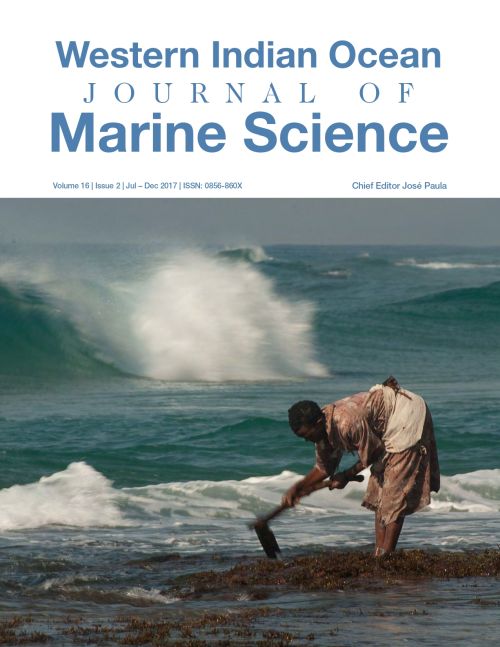Main Article Content
Phenology of mangroves and its implication on forest management: a case study of Mida Creek, Kenya
Abstract
Mangrove forest decline has continued despite establishment of protected areas, restoration and other conservation efforts. This is due to anthropogenic pressure, and phenological traits that together with adverse environmental factors derail natural and artificial regeneration. An understanding of phenological traits can inform planning and management of mangrove forests with benefits to restoration and increased mangrove area cover. Phenological traits of Rhizophora mucronata, Ceriops tagal, Bruguiera gymnorrhiza and Sonneratia alba, were studied in Mida Creek. Litter fall data was collected monthly on 10 m × 10 m plots from July 2010 to July 2012, oven dried, sorted into leaves, stipules, flowers and propagules, and weighed. Results obtained showed that leaf production occurred throughout the study period for all the species. Propagule fall occurred in the dry season for Ceriops tagal and Bruguiera gymnorrhiza, and during the wet season for Rhizophora mucronata and Sonneratia alba. Immature propagules accounted for 99 %, 86 % and 67 % of the cumulated propagules for R. mucronata, B. gymnorrhiza and C. tagal respectively. The longest propagule for R. mucronata was 40.5 cm. This indicates the need for nursery propagation of propagules of these species for seed availability. The findings of this study are discussed in relation to mangrove forest management.






